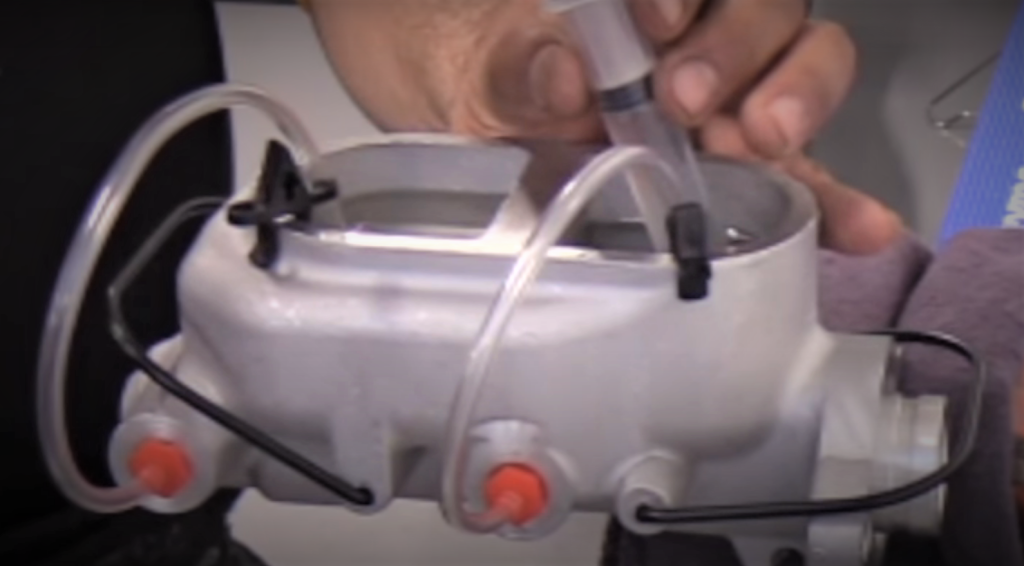One of the most commonly overlooked aspects of a brake system install or retrofit is the need to bleed the brake master cylinder before it is installed in a vehicle.

If you don’t, tiny bubbles can get trapped in the master cylinder’s brake fluid passages—and they’re dang-near impossible to purge out with the MC bolted in place. (If you’ve ever heard nightmarish tales of folks spending countless days and dollars fighting a squishy brake pedal, it’s often due to an improperly bled master cylinder.)
And while we’ve covered this topic before, we liked this particular video from the brake brains over at Classic Performance Products because it features a handy brake bleeding syringe tool.
A lot of gearheads like the syringe method because it can be faster and easier to cycle the fluid through the master cylinder’s passages, versus repeatedly pumping the master cylinder’s piston with a wooden dowel or drift. Even better, the video uses a cast brake master cylinder that is similar to pretty much every dual-reservoir MC found on a domestic vehicle made between, say, 1965 and 1985.
Not sure the difference between brake designs? Read this: What’s the Difference Between Single- & Dual-Circuit Brake Systems?
So if you’re undertaking a brake job in which you’ll be removing or installing a brake master cylinder (or if you’ve been struggling with a phantom squishy brake pedal), check out the video below:

Comments